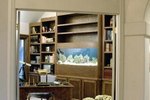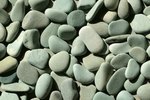
In a perfect world, you don't want to tear out your substrate and replace it with something else. In aquariums, bacteria in the substrate break down fish waste into less toxic chemicals. If you remove the old substrate, you're essentially starting the process of building bacteria from scratch, which can lead to ammonia or nitrite spikes. You can mitigate these risks, but the process is easier if you carefully plan your aquarium from the start.
Swapping
If you do decide to swap out the substrate, you want to do so gradually. To avoid mixing gravel and sand, you can put the gravel into mesh bags or pantyhose. Distribute the gravel to multiple bags. This makes it less likely you'll rip the bags and spill the gravel and allows you to remove the gravel gradually. When bagging, you can set the gravel bags in a bucket, but don't let them dry out. Once all of the gravel is bagged up, slowly pour your sand into place. Take care not to bury any fish or invertebrates. Then, quickly add the gravel bags back to the aquarium. The bacteria from the gravel will slowly colonize the sand bed. Remove the bags over the course of a month, and monitor your ammonia and nitrite levels daily.
Gravel Advantages
Keep in mind that gravel is ideal for most aquariums. Pea-sized gravel is just large enough to allow water movement through the gravel. This prevents the formation of anaerobic pockets, or dead zones without oxygen. Undesirable bacteria can thrive in these pockets, damaging water chemistry. This can happen with sand, too. Additionally, pea gravel is small enough that it doesn't create gaps where extra aquarium food can get stuck and rot, a problem with larger rocks. Pea gravel also works well with undergravel filters.
Advantages of Sand
Despite the advantages of gravel, sand makes a better substrate in some circumstances. Some fish like to bury themselves, and gravel can injure them. If you keep such species, they overcome the anaerobic issue by stirring the sediment with their burrowing. Additionally, some aquarium plants prefer sandy substrates. Additionally, some sand, like coral sand, can raise the pH and alkalinity of aquarium water, making it ideal for certain aquarium fish.
Starting with Sand
You should plan your aquarium carefully from the beginning to avoid the problems that come from swapping out your substrate. Additionally, you need to plan the depth of your substrate. The standard rule holds that 1 pound of aquarium gravel or sand per gallon will give you about an inch of substrate in the aquarium. This is more of a guideline than a rigid rule; tall aquariums need less substrate than wider tanks of the same volume to achieve the same depth. You want about an inch of substrate for most aquariums, though you will need more if you keep burrowing species or plants. The exact amount you will need for such aquariums will vary based on the specific species you decide to keep.
References
- Tropical Fish Hobbyist: Aquarium Basics: Aquascaping
- FishChannel.com: Cichlid Fish Habitat Tips
- The Complete Idiot's Guide to Freshwater Aquariums, Mike Wickham
Photo Credits
-
NA/AbleStock.com/Getty Images




